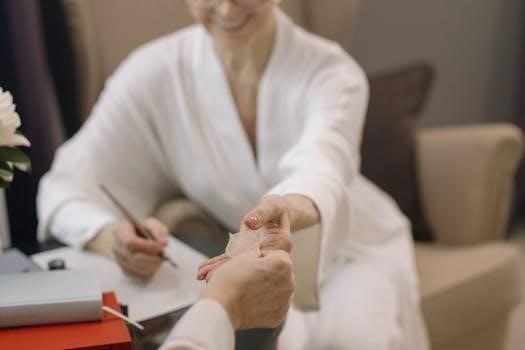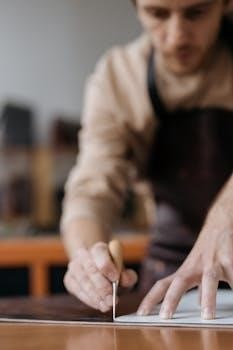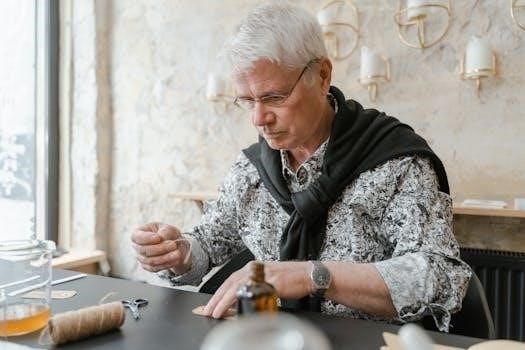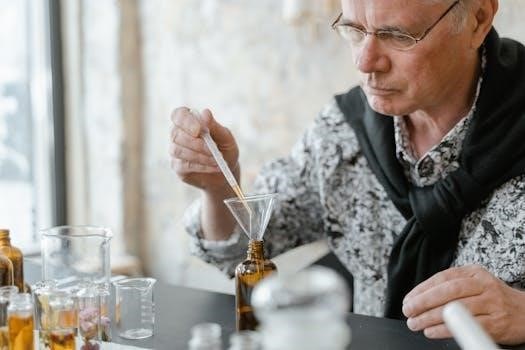Understanding perfume concentration is key to choosing the right fragrance. These levels indicate the ratio of essential oils to alcohol and water, affecting scent strength and longevity. Categories range from highly concentrated parfum to lighter eau fraiche, each with unique characteristics. This guide will explore these differences.
Parfum (Extrait de Parfum)
Parfum, also known as Extrait de Parfum or pure perfume, represents the pinnacle of fragrance concentration. This category boasts the highest percentage of perfume oil, typically ranging from 20% to 40%, sometimes even exceeding that. With such a rich concentration, parfum offers the most intense and long-lasting scent experience. It is renowned for its depth, complexity, and luxurious quality. Because of the high concentration, less alcohol is used in its creation, allowing the essential oils to shine, resulting in a longer-lasting aroma. Due to its potency, parfum is often reserved for special events or occasions where a lasting impression is desired. Its longevity is remarkable, frequently lasting from 6 to 8 hours, with some formulations lasting up to 24 hours. This makes it the most expensive option, however, a small amount is enough for an all-day effect. This concentration is perfect for those who want a powerful, enduring fragrance that doesn’t require frequent reapplication.
Eau de Parfum (EDP)
Eau de Parfum, commonly abbreviated as EDP, is a popular fragrance concentration that strikes a balance between strength and longevity. It typically contains a perfume oil concentration of 15% to 20%, sometimes reaching 25%. This makes it a robust option, offering a noticeable scent that lasts several hours. EDP is often considered a good middle ground, providing a richer and more complex fragrance experience than Eau de Toilette but without the intensity and cost of pure Parfum. The middle notes of an EDP are often more pronounced, contributing to its overall strength and performance. While it may not project as far as an EDT, its longevity is usually superior, typically lasting between 4 to 8 hours. Due to its versatility and long-lasting nature, Eau de Parfum is a very popular choice among consumers. It is suitable for everyday wear, as well as for special occasions when you want a fragrance that lingers throughout the day. It’s a good choice for those who seek a fragrance that doesn’t require frequent reapplication.

Eau de Toilette (EDT)
Eau de Toilette, often labeled as EDT, is a lighter fragrance concentration compared to Eau de Parfum. Typically, it contains between 5% and 15% perfume oil, resulting in a more subtle scent profile. Due to its lower concentration of fragrance oils, EDT is often characterized by its refreshing and less intense aroma. It is a popular choice for those who prefer a fragrance that is not too overpowering, making it suitable for everyday wear, especially in warmer climates. The longevity of an EDT is generally shorter than that of an EDP, usually lasting around 4 to 7 hours, requiring reapplication for a continuous effect. While EDT may not last as long, its initial projection can be quite strong, making it a great option for making an immediate impact. The lighter concentration also makes it a more affordable option. Overall, Eau de Toilette offers a balance of lightness, affordability, and noticeable fragrance, making it a versatile choice for many.

Eau de Cologne (EDC)
Eau de Cologne, frequently abbreviated as EDC, represents a lighter fragrance concentration with a lower percentage of perfume oil. Typically, an EDC contains approximately 2% to 5% fragrance oil, mixed with alcohol and water. This low concentration results in a very light and refreshing scent, making it a popular choice for those seeking a subtle fragrance. Eau de Cologne is often associated with a clean and invigorating aroma, ideal for warm weather or after-shave use. The longevity of an EDC is significantly shorter compared to other fragrance types, usually lasting only about 2 hours. Due to its light nature, it often requires frequent reapplication to maintain the desired scent. While it may not have the staying power of an Eau de Parfum or Eau de Toilette, EDC’s refreshing and subtle character makes it a great option for those who prefer a light and unobtrusive fragrance; Its lower price point also makes it a more accessible choice for everyday use, making it a popular option for a quick refreshing scent.
Eau Fraiche
Eau Fraiche stands as the most diluted fragrance concentration, offering an even lighter experience than Eau de Cologne. Typically, Eau Fraiche contains just 1% to 3% fragrance oil, which is mixed with a high proportion of water and alcohol. This very low concentration results in a delicate, sheer scent that is exceptionally subtle and refreshing. Eau Fraiche is often designed for its cooling and hydrating effect, making it ideal for use in hot and humid climates. Due to its very low oil concentration, Eau Fraiche has the shortest longevity, usually lasting no more than one to two hours. The scent is often perceived as a light, fleeting whisper, providing a quick burst of freshness rather than a long-lasting aroma. It is not meant to be a long-wearing fragrance, but is perfect for those who prefer a very subtle scent or who enjoy the sensation of a light, refreshing spritz. Its low price point also makes it an accessible option for all users, and its gentle nature is suitable for those sensitive to strong perfumes.
Fragrance Oil Concentration Explained
Fragrance oil concentration refers to the percentage of pure perfume oils present in a fragrance, in relation to the alcohol and water used as a carrier. This concentration is the primary factor determining the strength, longevity, and projection of a perfume. A higher concentration indicates a greater proportion of perfume oils, resulting in a more intense and longer-lasting scent. Conversely, a lower concentration means a more diluted fragrance with a lighter and less persistent aroma. The concentration levels are standardized into categories, such as Parfum, Eau de Parfum, Eau de Toilette, Eau de Cologne, and Eau Fraiche. Understanding these categories is essential for selecting a fragrance that matches your desired intensity and staying power. Higher concentrations, like parfum, typically contain 20% to 40% perfume oil, while lower concentrations, such as Eau Fraiche, might only have 1% to 3%. This difference in oil concentration directly influences the price, performance, and overall experience of the fragrance, therefore, paying attention to this factor is paramount when choosing a scent.
Longevity of Different Concentrations
The longevity of a fragrance is directly linked to its concentration of perfume oils. Parfum, with the highest concentration (20-40%), boasts the longest-lasting scent, often persisting for 6 to 8 hours, and sometimes even up to 24 hours. Eau de Parfum (EDP), with its 15-20% concentration, typically lasts between 4 to 8 hours, offering a good balance of longevity and intensity. Eau de Toilette (EDT), containing 5-15% perfume oil, generally lasts for 4 to 7 hours, making it suitable for daily wear. Eau de Cologne (EDC), with a 2-5% concentration, has a lighter scent that usually lasts for about 2-3 hours, ideal for a quick refresh. Finally, Eau Fraiche, with the lowest concentration of 1-3%, provides a very fleeting scent that may only last for an hour or two. These durations are approximate, and can vary based on individual body chemistry, environmental factors, and the specific formulation of each fragrance. Choosing the right concentration depends on how long you need the scent to last and how intense you want it to be.

Factors Affecting Scent Strength
Several factors influence how strongly a perfume projects and how long it lasts, beyond just the concentration level. Individual body chemistry plays a significant role; skin type, pH levels, and even diet can alter how a fragrance interacts with the skin and how long it lasts. Environmental conditions, such as temperature and humidity, also affect scent strength. Warmer temperatures tend to amplify the scent, while higher humidity can make it linger longer. Application methods are another key factor. Applying perfume to pulse points, such as wrists and neck, where blood flow is closer to the surface, can enhance its projection. The specific notes within a fragrance also play a role; base notes tend to be longer-lasting than top notes. Additionally, the quality of ingredients and the formulation of the perfume itself can influence its strength and longevity. Even the amount applied can change the impact. These elements combine to determine how a perfume performs on each person.

Choosing the Right Concentration
Selecting the appropriate fragrance concentration depends largely on personal preference and intended use. Consider the desired intensity and longevity when making your choice. If you prefer a more subtle fragrance that doesn’t overwhelm, opt for lighter concentrations like eau de cologne or eau fraiche. These are ideal for daily wear or warmer climates. For a scent that lasts longer and makes a stronger statement, eau de parfum or parfum are better choices. These are often preferred for special occasions or evening events. Your skin type can also guide your decision; drier skin tends to hold scents less effectively, making a higher concentration more suitable. Think about your lifestyle and the environment. If you’re in a close working environment, a lighter scent might be more appropriate. Trial and error can help find what works best. Ultimately, choosing the right concentration is about matching the fragrance to your needs and how you want to be perceived.
Occasions for Each Concentration
The right perfume concentration can significantly enhance an occasion. For formal events or evening galas, parfum is ideal due to its high concentration and long-lasting scent, ensuring you leave a memorable impression. Eau de parfum, with its moderate longevity and noticeable aroma, suits daytime events and social gatherings, providing a balanced scent profile that isn’t overpowering. Eau de toilette, being lighter, is perfect for everyday use, such as office settings or casual outings. It offers a refreshing touch without being too intense. Eau de cologne, with its even lighter concentration, is best for hot weather or post-gym situations, offering a subtle and invigorating scent. Eau fraiche is excellent for very casual moments, offering a barely-there hint of fragrance, making it suitable for very warm weather or when you want a very light scent. Choosing the right concentration for the occasion shows consideration and enhances your overall presence, making it an important part of your fragrance routine.